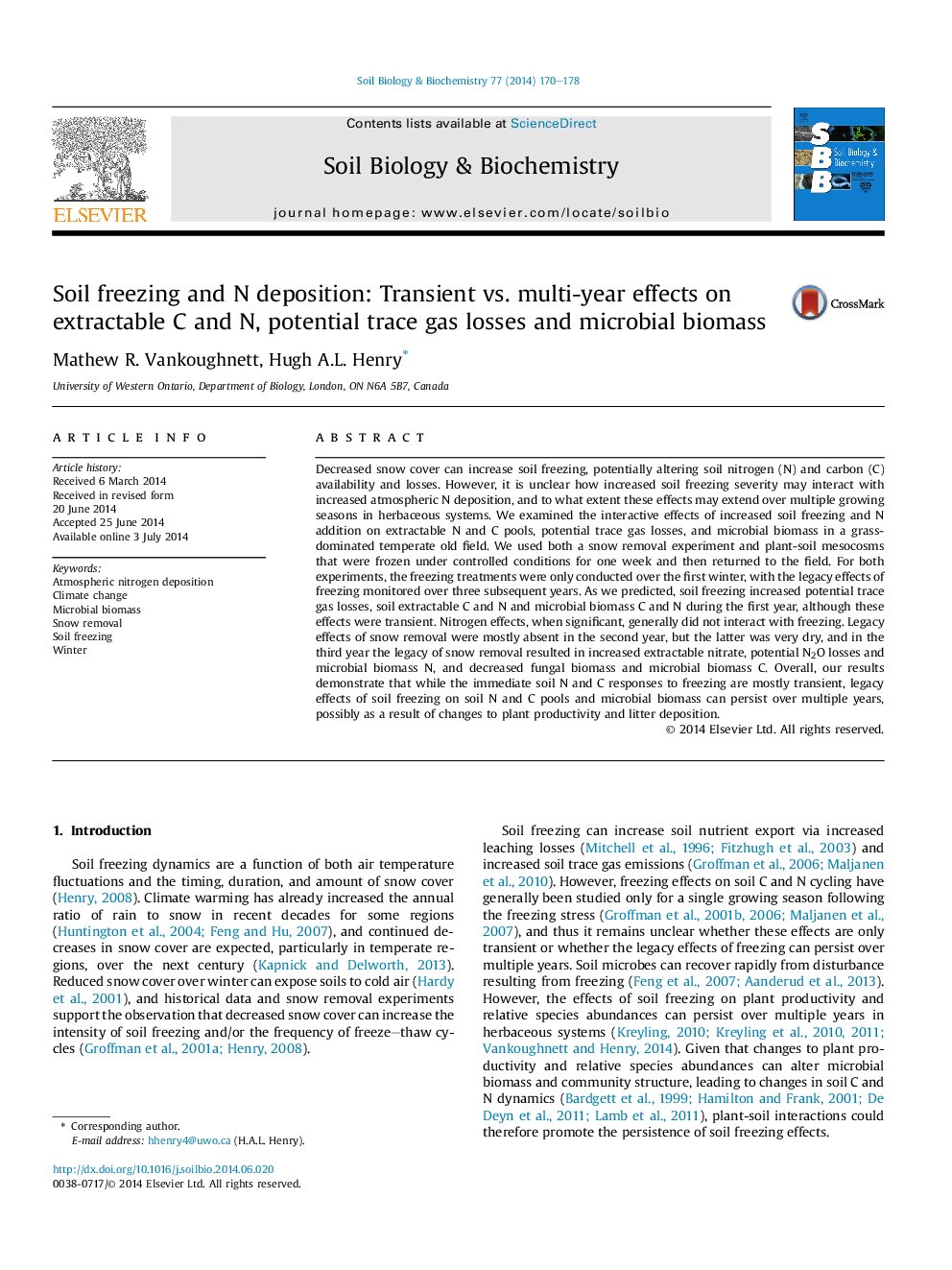| Article ID | Journal | Published Year | Pages | File Type |
|---|---|---|---|---|
| 8364513 | Soil Biology and Biochemistry | 2014 | 9 Pages |
Abstract
Decreased snow cover can increase soil freezing, potentially altering soil nitrogen (N) and carbon (C) availability and losses. However, it is unclear how increased soil freezing severity may interact with increased atmospheric N deposition, and to what extent these effects may extend over multiple growing seasons in herbaceous systems. We examined the interactive effects of increased soil freezing and N addition on extractable N and C pools, potential trace gas losses, and microbial biomass in a grass-dominated temperate old field. We used both a snow removal experiment and plant-soil mesocosms that were frozen under controlled conditions for one week and then returned to the field. For both experiments, the freezing treatments were only conducted over the first winter, with the legacy effects of freezing monitored over three subsequent years. As we predicted, soil freezing increased potential trace gas losses, soil extractable C and N and microbial biomass C and N during the first year, although these effects were transient. Nitrogen effects, when significant, generally did not interact with freezing. Legacy effects of snow removal were mostly absent in the second year, but the latter was very dry, and in the third year the legacy of snow removal resulted in increased extractable nitrate, potential N2O losses and microbial biomass N, and decreased fungal biomass and microbial biomass C. Overall, our results demonstrate that while the immediate soil N and C responses to freezing are mostly transient, legacy effects of soil freezing on soil N and C pools and microbial biomass can persist over multiple years, possibly as a result of changes to plant productivity and litter deposition.
Keywords
Related Topics
Life Sciences
Agricultural and Biological Sciences
Soil Science
Authors
Mathew R. Vankoughnett, Hugh A.L. Henry,
